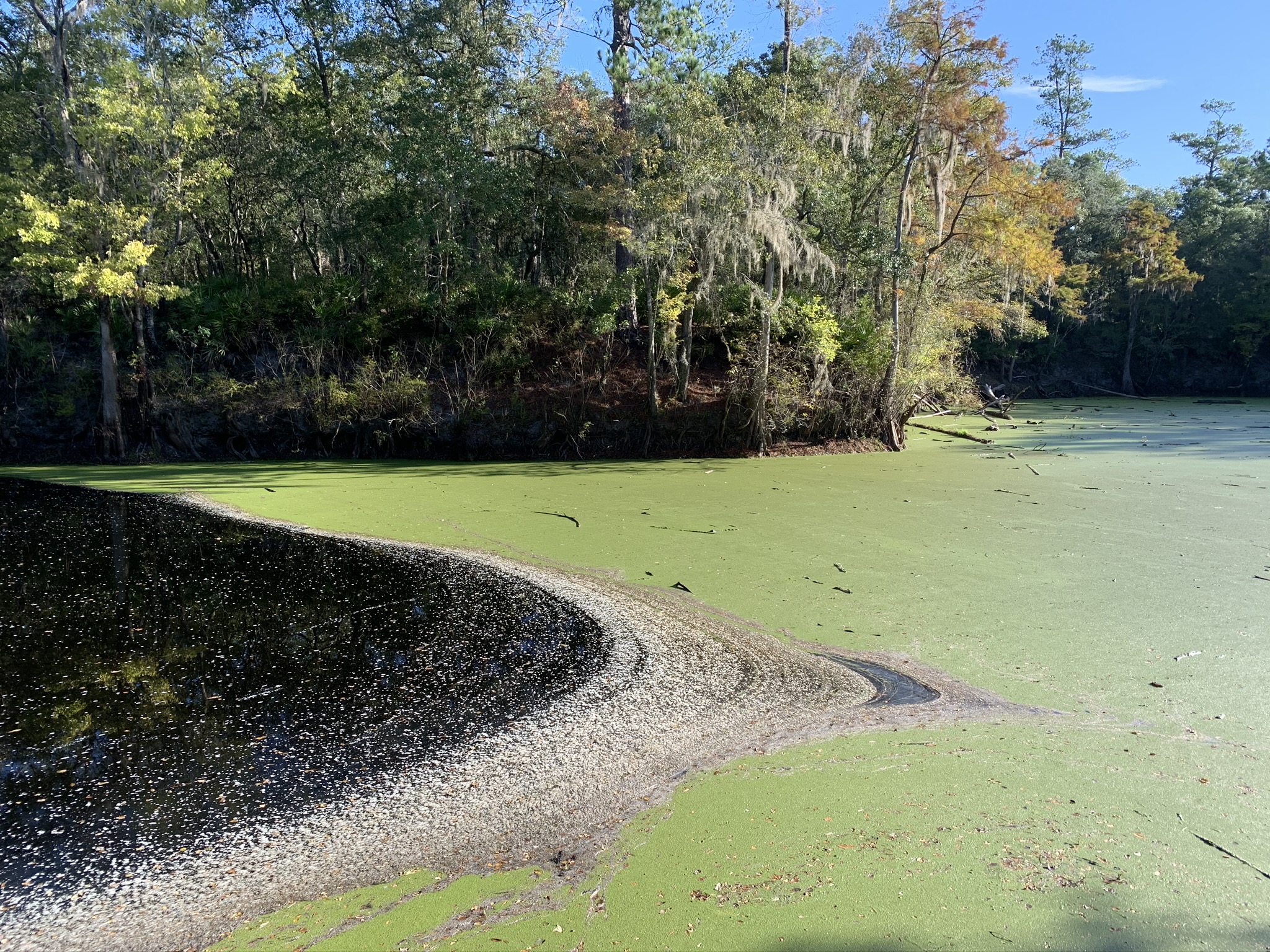In November, our Director engaged the public with Project Baseline’s mission and call to action at four events centered around the 20th anniversary GUE conference that was held in Gainesville Florida.
UM Scuba Club
On November 5th, Todd was invited to speak at the University of Miami’s Scuba Club in Coral Gables, Florida by the club president Patrick Kiel. There, he was able to engage with around 30 scuba divers of varying experience but mostly all college students. His talk was well received and several people engaged with him at the end to ask about how they could get involved and start contributing. The UM Scuba club sponsors near-weekly dive trips to the reefs all along Florida’s southeast coast. The hope is to inspire active participation from clubs like UM, which would greatly increase our reach and effectiveness at engaging the community to get involved with coral reef monitoring and protection.
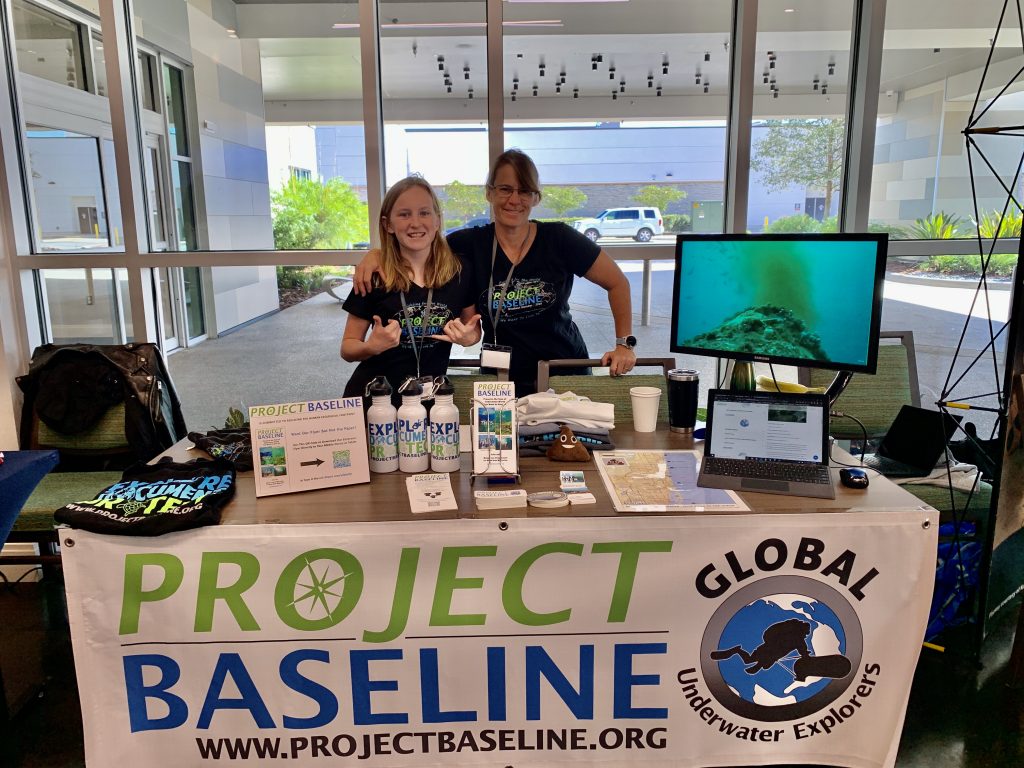
GUE Conference
The GUE conference was held on November 9th in Gainesville, Florida. It was great to be home again, so to speak, and we really thank Jarrod and the GUE Staff for putting on a great conference and continuing GUE’s support for Project Baseline. The conference was very well attended, as usual, and provided a wonderful opportunity to reconnect with old friends and meet new ones. The whole Project Baseline staff attended, Todd, Kristie, Diana, Amanda, and even Ginnie. We set up and staffed a booth, and ran a breakout session on Project Baseline where we engaged with several GUE divers new to PB. Special thanks to German Barrientos, Sven Nelles, Christina Lapid, and Meredith Tanguay for their enthusiastic support of PB at the conference. They all became members on the spot and German is already working to start the first PB effort in Chile. We’re up to 28 members now – 72 more to the 100-member milestone!
The conference opened with a talk by Jarrod focused on the history of GUE. It was a great reminder that PB’s mission stems from a new kind of diving organization that came on the scene only 20 years ago, one dedicated to inspiring divers to engage in exploration and conservation of the underwater world as well as training. PB was inspired by the work GUE helped perform in the Woodville Karst Plain where divers, who decided to share what only they could see of the caves running under peoples feet from Tallahassee to the Gulf of Mexico, inspired 10+ years of organized research by the State that led to societal changes in north Florida and improved water quality at Wakulla Springs. A fuller description of the work at Wakulla Springs can be found in Todd’s article “The Power of Connection: The WKPP’s Exploration of the Wakulla-Leon Sinks Cave System” in GUE’s journal Quest vol 20 no 3. GUE inspires the formation of communities comprised of people who share a common passion for diving but may otherwise not have come together. It is through these types of communities that PB will be able to achieve our mission.
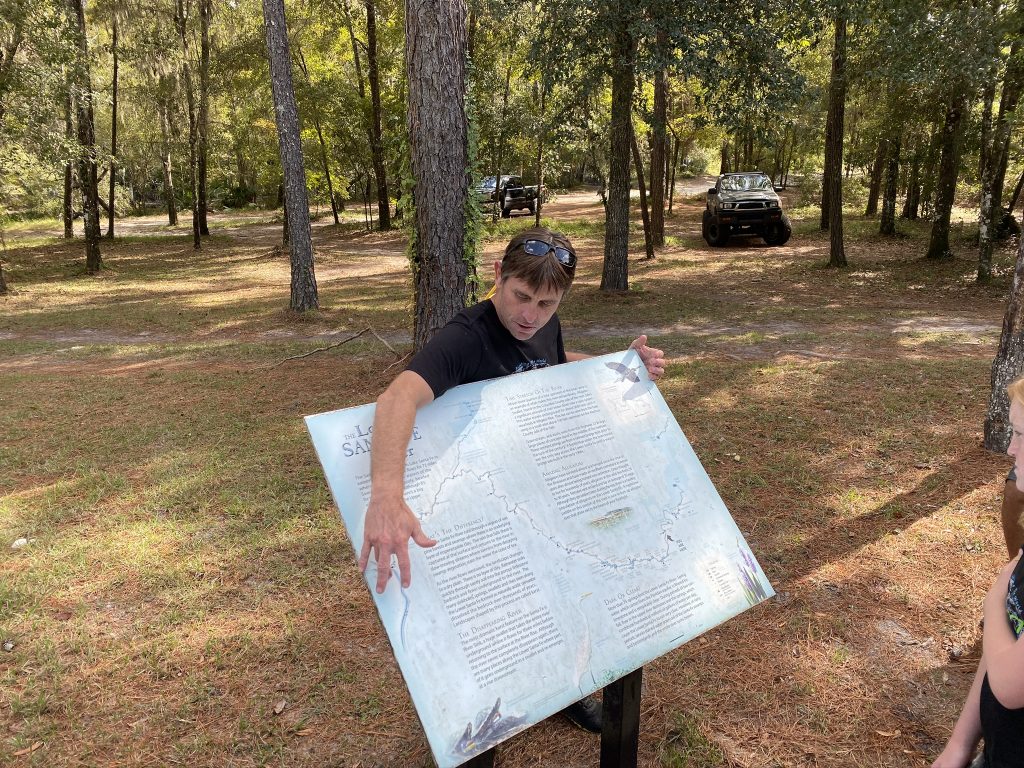
Santa Fe River Field Trip
On November 11th, Todd led a field trip through the western Santa Fe River basin. The group essentially followed the path of water on its trek from the surface, underground through caves and to some of Florida’s most iconic springs, including Ginnie Springs and the famous Devil’s Ear cave system. We had the largest attendance ever, 40 people hiking through the woods to see the Santa Fe River disappear underground at O’leno State Park and making an armada of canoes and kayaks floating down the river to Ginnie Springs.
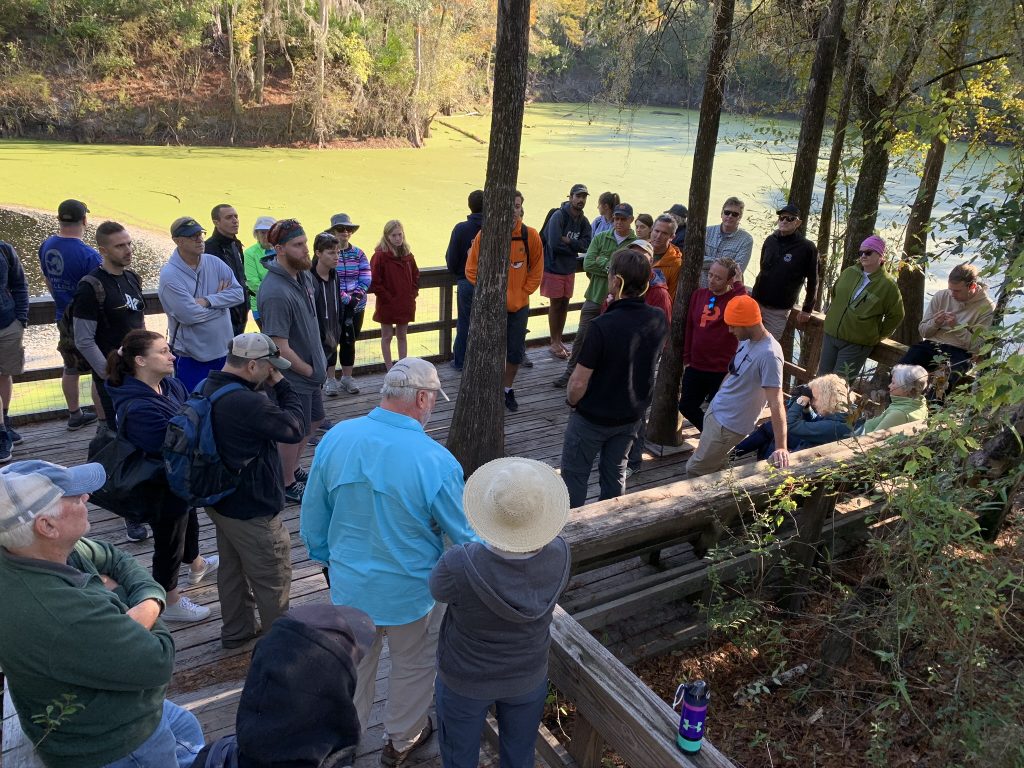
For all of you who could not join us, the main takeaways were:
- Springs get their water from what’s called a springshed which is the area from which rainfall enters the ground and flows through rocks and caves to springs.
- In Florida, springsheds are nearly always relatively small, meaning the source of spring water is the area within 10s of kilometers of the springs.
- Spring water quantity and quality is determined by how much groundwater we take out for wells, irrigation, mining, anything really, and spring water quality is determined by what we do on the land surface within the springshed.
- Florida’s springs are becoming overrun with algae and bacteria because people are adding too much nutrients (primarily a compound called nitrate) to the land and waters within the springsheds. The largest sources include agricultural fertilizers, wastewater from agribusinesses called confined animal feeding operations (CAFOs) that include diaries and chicken and pig production facilities, municipal and private wastewater disposal, and residential fertilizer use.
- The best way for societies to sustain spring flows is to adopt in-line water uses that return extracted groundwater to the springsheds from which it was taken after treating the used water to remove nutrient loads.
- Here’s what we can do as individuals to help…
- Support efforts in our local communities and at home to reduce the use of fertilizers and remove nutrients from wastewater before its released back to the environment.
- Vote GREEN. Vote for politicians who will support policies that will ensure the long-term vitality of our world’s natural resources.
- In addition to supporting organizations like Project Baseline, support land conservation trusts or similar efforts to buy lands and dedicate them to conservation, which preserves the health of the water beneath them as well.
- Share what we know about Florida springs with your friends! They’re beautiful, life sustaining natural resources worthy of protecting for future generations to enjoy as we have.
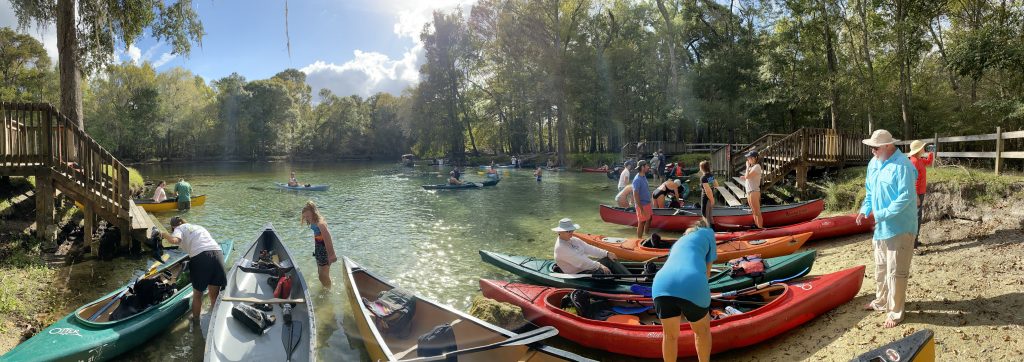
Thanks to the FL State Parks, Camp Kulaqua, and Ginnie Springs Outdoors for granting us free access to O’Leno State Park, Hornsby Spring, Blue Spring State Park, and Ginnie Springs. Being able to stop at those locations without having to pay for access allows us to keep the registration fee affordable. Thanks also to Tess Skiles with the Florida Springs Institute and Nate Skiles for participating in the trip and sharing their knowledge of the springs and history of the springs and cave exploration with the group. Special thanks to Lars Anderson and the Adventure Outpost for setting us up with the boats and shuttles and for his help leading the trip. I know many people benefited from his knowledge as we paddled downriver together.
DEMA 2019
On November 12th, Todd headed down to Orlando to represent Project Baseline at the 2019 DEMA show. He made two presentations about PB, our mission, our database, and our global network of teams, one for GUE on the main floor and one for TDI/SDI in a conference room. Both were well-attended and well-received and it seems that this was a big step toward firmly establishing PB as a force for conservation within the broader diving community.
Todd met with Halcyon, Paralenz, Forth Element, and TDI/SDI to discuss Project Baseline sponsorship and support and each one of those organizations responded positively. It certainly seems reasonable to expect meaningful collaborations with them in 2020. He also met with Tec Clark and Bill Conrad, directors of the Nova Southeastern University’s Academic Diving Program in Fort Lauderdale, FL to discuss incorporating PB into their curriculum. We’re excited to report that this is moving forward toward a goal of a 2020 start date as well. Will be working to get a draft syllabus to them this month. In addition to being a great way to expand PB’s reach, this opportunity will help us develop formalized education and support materials that we’ll be able to share with all our members.
Finally, Todd was interviewed by Dean Laffan for GUE.TV where they discussed PB’s mission and how people can get involved. That interview is now available on YouTube.
